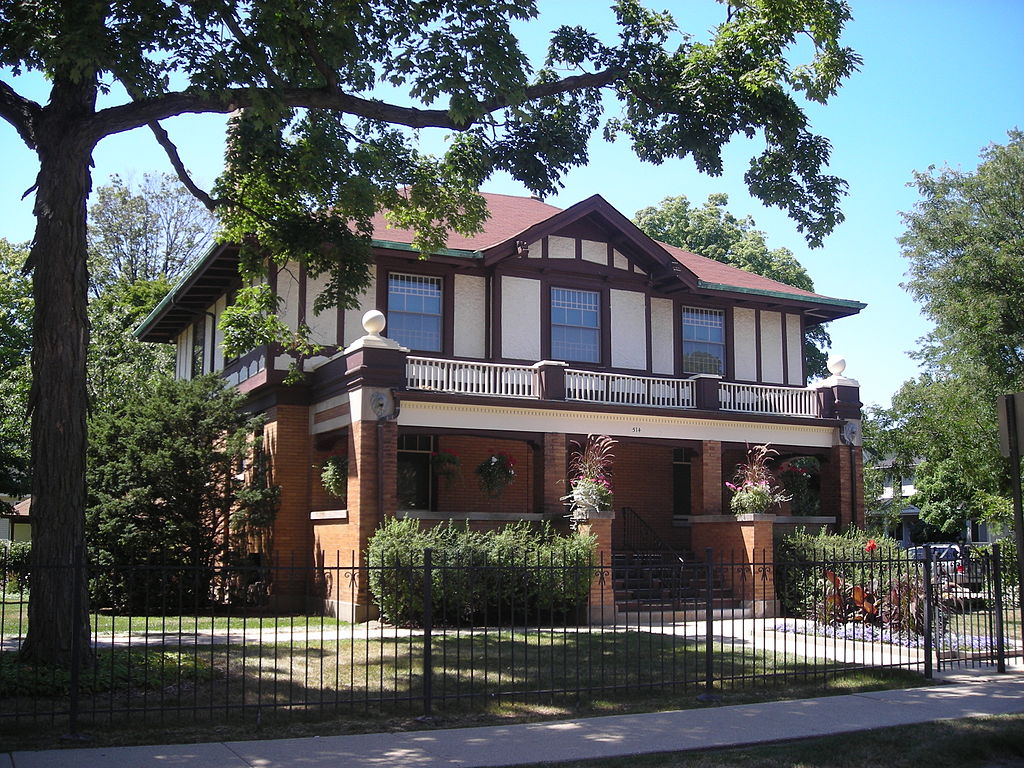#6350. Dual-Tone Facade: Brick and Stucco Craftsman Residence with Tudor Elements
The photograph showcases an excellent example of American Craftsman architecture with Tudor influences, popular in the early 20th century. This two-story residence features a characteristic dual-tone facade treatment: the lower level is clad in reddish-brown brick, while the upper level is finished with light stucco contrasted by dark brown wooden beams.
The facade is symmetrically organized, with a central entrance adorned by a wide porch supported by substantial brick columns. The second-floor open terrace with elegant white railings adds refinement to the building and serves as a functional extension of the living space. The triangular gable on the roof with the characteristic Craftsman-style overhanging eaves emphasizes the vertical composition of the building.
Window openings are evenly distributed across the facade, creating a rhythmic pattern. The second-floor windows, framed by dark wooden trim, contrast with the light stucco and enhance the expressiveness of the facade. The pitched roof is covered with reddish-brown tiles that harmonize with the brickwork of the lower level.
The residence is surrounded by a well-maintained garden with ornamental plants, and a metal fence separates the private territory from the sidewalk while maintaining the visual accessibility of the architectural object. Mature trees frame the house, providing pleasant shade and emphasizing its historical rootedness in the surrounding landscape.
